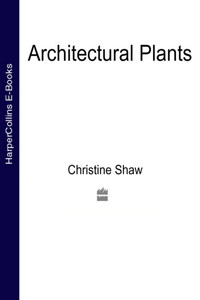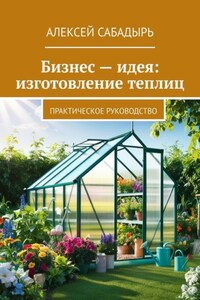ABOVE
Alocasia macrorrhiza
CopyrightCollins
An imprint of HarperCollinsPublishers Ltd. 1 London Bridge Street London SE1 9GF
www.harpercollins.co.uk
First published in 2005 by Collins
Text copyright © Christine Shaw
Design and layout copyright
Copyright © HarperCollinsPublishers Ltd.
Editor: Helen Ridge
Designer: Alison Fenton
For HarperCollins
Senior Managing Editor: Angela Newton
Assistant Editor: Lisa john
Production Controller: Chris Gurney
A CIP catalogue record for this book is available from the British Library
The Author asserts the moral right to be identified as the author of the this work
All rights reserved under International and Pan-American Copyright Conventions. By payment of the required fees, you have been granted the nonexclusive, nontransferable right to access and read the text of this ebook on-screen. No part of this text may be reproduced, transmitted, downloaded, decompiled, reverse-engineered, or stored in or introduced into any information storage and retrieval system, in any form or by any means, whether electronic or mechanical, now known or hereafter invented, without the express written permission of HarperCollins ebooks
HarperCollinsPublishers has made every reasonable effort to ensure that any picture content and written content in this ebook has been included or removed in accordance with the contractual and technological constraints in operation at the time of publication
Source ISBN: 9780007204700
Ebook Edition © FEBRUARY 2017 ISBN: 9780007442607
Version: 2017-02-08
Dedication
This book is for my daft cousin Steve, whose knowledge of horticulture could be written on a small postage stamp, and also for my learned chum Angus White, whose extensive plant knowledge has been a pleasure to share.
ABOVE
Yucca gloriosa variegata
Hardiness colour codes
All the plants featured in this book have been given a hardiness colour code. This is to help you select plants that are capable of surviving the winters in your area.
|
GREEN
|
hardy down to -20°C (-4°F)
|
|
ORANGE
|
hardy down to -10°C (14°F)
|
|
RED
|
hardy down to -5°C 23°F)
|
|
DOUBLE RED
|
hardy down to 0°C (32°F)
|
ABOVE
Alocasia macrorrhiza
Introduction
ABOVE
Agave americana variegata is a wonderful spiky choice for a mild garden.
Architectural plants are currently enjoying a massive wave of popularity, and quite rightly so. In fact, this type of gardening is the fastest-growing area of horticulture. More and more gardeners are realizing that these types of plants can have a dramatic effect on an ordinary garden, transforming it into something much more exciting.
I have always had an interest in gardening and, after six years of dealing with various company accounts and other financial shenanigans, followed by a rather lengthy stint as a croupier, decided that a career in horticulture was long overdue. The usual channels of night school and part-time college courses resulted in a job at the local garden centre, but I quickly came to the conclusion that fruit trees and roses weren’t as interesting as I had first thought and that it was time to move on. So, off I went for an interview at a company called Architectural Plants. As soon as I approached the premises, I knew this was where I wanted to be. The whole place was stuffed to the gunwales with exotic-looking trees, banana plants (Musa), spiky Yucca and all manner of wonderful things. Nearly fifteen years later, I still enjoy every aspect of working with these incredible plants.
For a plant to be considered architectural, it needs to have either a strong shape, an exotic appearance, an evergreen presence or an unusual quality that can visually improve its surroundings.
Some plants such as palms, Agave, Yucca and tree ferns (Dicksonia) have obvious architectural traits. They have a strong, shapely outline and are completely different from the sort of plants most gardeners are used to. They are very noticeable in the garden, and have year-round appeal. As they are evergreen, their theatrical allure is particularly valuable during the winter when other more traditional gardens in the neighbourhood look tired and dull, with most plants having shed their leaves.
ABOVE
This colonial-style office surrounded by exotic greenery forms part of the Architectural Plants nursery. See page 352 for contact details.
ABOVE
Arbutus x andrachnoides has everything a gardener could ever want from a small, ornamental evergreen tree.
ABOVE
Musa basjoo has large jungly leaves that are perfect for adding a bit of drama to the garden.
Then there are architectural plants that have more subtle qualities while still remaining highly desirable. The red, peeling bark and the winter flowers of the evergreen Strawberry Tree (








